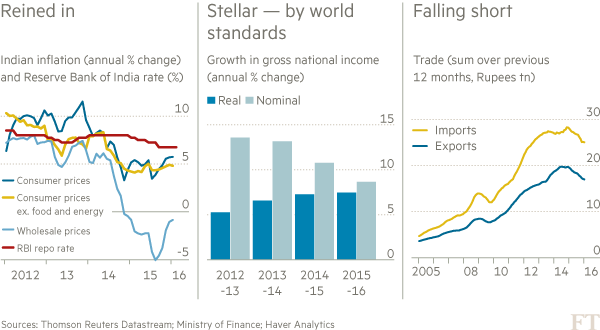For any O&G investment what matters most is what the price of oil will be after you spent the CAPEX and start pumping.
On one hand that depends on what is the fundamental price, by that I mean what Warren Buffett calls the “intrinsic value”, what International Valuation Standards calls the “Other than Market Value”, and what the Saudi’s call the “Fair Price”.
That’s when there is equilibrium, when the price is low enough so the customers can afford to pay without either (A) going badly into debt, or (B) abandoning their cars and riding bicycles; and there is of course a choice on that; although thanks the glories of fiat currencies most customers go with Plan A.
While at the same time providing sufficient incentives for E&P companies to develop new sources to replace the oil that is being used up.
It’s hard to judge what that (theoretical) number is; different people have different ideas. Five years ago the Saudi’s were saying it was $75 and so when the price headed up to $120 (Brent), they started saying, “guys, this is going to end in tears”. And that’s exactly what happened.
On the other hand, the price you are likely to get after you spent the CAPEX depends on what the rest of the world was doing while you were spending it. If they were all drilling like crazy then likely you or more likely your bankers, will be tearful when the time comes to open the tap, but if they were not, then you got champagne all-round.
What the Saudi’s were saying (five years ago), was that $120 oil would suck in drillers who could only make money if the price was a lot more than $75, particularly if central banks were throwing money at them and in the case of shale oil, Wall Street was happily writing derivatives hedging forward production at $100. And that’s what happened. So now there is a glut and there are tears all-round. Which was entirely predictable, what’s most surprising is why everyone was so surprised?
But something really surprising happened during the time that the oil price was more than $100, which was not predictable although not entirely surprising.
In 2013 the break-even oil price at wellhead for shale oil ranged from $70 to $95; average about $80. According to Rystad Energy in 2015 that had fallen to $40 to $50 (average about $45); what changed was the technology and infrastructure improved, in 2016 with two out of three drilling rigs stacked there are likely bargains galore for anyone brave (or foolish) enough to take a gamble which could push the breakeven down even more. That change is illustrated by the change in new shale oil brought on line per rig deployed (from analysis of EIA data).

In three years before the oil price tanked, new production brought on line per rig deployed, nearly doubled. Over the past eighteen months it has nearly doubled again and although that is likely due to an increase in a slowdown in bringing on line “drilled but uncompleted” (DUC) wells, there is likely an element of refracking involved.
Leaving aside what the customers can afford to pay, and clearly thanks to QE everyone had the means to take on a little more debt so they could avoid trading in the SUV for a bicycle, so that’s a hard number to judge; and in any case if the world could (thanks to QE) “afford” $100 oil it ought to be able to afford $30 oil or something in –between.
So, leaving that aside, the fundamental price is dictated by how much it costs to bring on more supply in any quantity, what changed is that cost changed, just like after the 1980’s oil spike, the investment in offshore technology provided the means to bring on new oil, except in that case they couldn't switch off the oil found during that bubble, so there were tears for years. Shale oil is different.
Looking at the likely “fundamental” price now another way; what happened when oil was $100 was a classic bubble, fueled like many bubbles by easy money, on one hand so that the customers could “afford” to pay the price, and on the other hand by derivatives that insured the future price at $100, just like the derivatives written by AIG propped up house prices. Then there was a bust.
Don’t believe what the central bankers say about how smart they are when they create bubbles; bubble & bust is (net) zero sum, they create no long-term economic value; so the amount of money paid out more than the fundamental (sellers won and buyers lost), must, mathematically equal the amount the buyers “won” when the price ended up below the fundamental (sellers lost and buyers won).
That’s what happened in the housing bubble and bust, and to stock-markets. Do the arithmetic, what that means is that when there is a bust, at that time the fundamental is roughly equal to the square-root of (the price just before the bust ($105) multiplied by the price at the bottom of the bust ($30)) = $56
That’s a second-guess for roughly where the price is headed, back to the fundamental after a period of bubble and then bust; intriguingly that price is similar to what looks like the price at which shale oil drillers can start to make money; and what gives confidence to that number is it worked out pretty much the same using two totally different valuation methodologies.
When it gets there is hard to predict, perhaps OPEC and other producers who have conventional oil will throw in the towel, in which case that will be soon; and until they do, they will suffer more than the shale oil drillers. They have failed to make shale oil go away, they can keep pumping as long as they are able, but their wells are depleting too, and most can’t afford to go after new oil unless the price goes to $75 or more.
If they don’t slow down and continue to pump as much as they can, the shale oil drillers will have to wait until about two-million barrels per day gets depleted. Depletion of conventional supplies is running at about 300,000 barrels per day per year. Shale oil is depleting (net) at about 85,000 barrels per day per month; that will rise a bit perhaps to an average of 100,000 per month over the next twelve months; so rough numbers, perhaps 15-months to go until $56 is reached.
If the shale oil drillers can bring in the goods at about that price, not just in USA, but also in Argentina and Australia, the next ten years will be all about shale oil.













